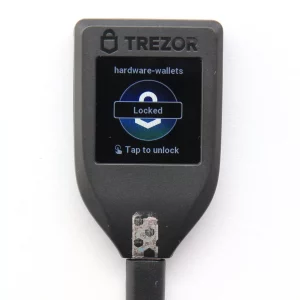The Bitcoin network and the Lightning Network are both integral parts of the Bitcoin ecosystem, but they operate in distinct ways. The Bitcoin network, also known as Layer 1 or on-chain, serves as the core infrastructure for Bitcoin transactions. On the other hand, the Lightning Network, referred to as Layer 2, is a second-layer solution built on top of the Bitcoin network to address scalability issues and enable faster and cheaper transactions.
How Does Bitcoin Network Work
The Bitcoin network operates through a decentralized peer-to-peer system, where transactions are verified and added to a public ledger called the blockchain through a process known as mining. Miners use computational power to solve complex mathematical puzzles, securing the network and validating transactions. Once a transaction is confirmed, it becomes irreversible and permanently recorded on the blockchain. However, the Bitcoin network can be slow (transactions can take up to 10 minutes to confirm) and expensive (fees can fluctuate depending on network congestion).
How Does Bitcoin Lightning Network Work
The Lightning Network operates by creating payment channels between users, allowing them to conduct off-chain transactions without directly involving the main Bitcoin blockchain. Users can open a payment channel by committing some Bitcoin to a multi-signature address, which acts as a temporary ledger. Transactions can then be conducted instantly and privately between parties within the channel, with the final settlement being recorded on the Bitcoin blockchain when the channel is closed.
What is the Difference Between Lightning Network and Bitcoin Network?
While the Lightning Network is built on top of the Bitcoin network and relies on its security, they are not the same. The Lightning Network aims to address the scalability and speed limitations of the Bitcoin network by enabling off-chain transactions through payment channels. It offers faster and cheaper transactions compared to the Bitcoin network, but it also introduces new challenges such as centralization risks and increased complexity.
Here are some key differences between the Bitcoin network and the Lightning Network:
- Transaction Speed: Bitcoin transactions can take up to several minutes to confirm, especially during times of high network congestion, while Lightning Network transactions are nearly instant.
- Transaction Fees: Bitcoin transaction fees can vary depending on network congestion and transaction size, whereas Lightning Network transactions typically have lower fees since they occur off-chain.
- Scalability: The Bitcoin network has a limited capacity for processing transactions, leading to congestion during periods of high demand. The Lightning Network can potentially scale to process millions to billions of transactions per second, alleviating congestion on the main Bitcoin network.
- Privacy: Bitcoin transactions are recorded on the public blockchain, making them visible to anyone. Lightning Network transactions are private by default, as they occur off-chain and are not broadcast to the public network.
- Interoperability: While the Lightning Network is specifically designed to work with Bitcoin, it is theoretically possible to build similar layer-2 solutions for other blockchains. The Bitcoin network, however, is specific to the Bitcoin blockchain.
It’s worth noting that there are Bitcoin wallets and Lightning wallets. Some wallets are designed exclusively for Bitcoin transactions, while others are tailored specifically for Lightning transactions. However, there are also wallets that support both Bitcoin and Lightning transactions, offering users flexibility in how they interact with the Bitcoin ecosystem.
More information: Bitcoin Wallet vs Lightning Wallet
Should I Use Bitcoin or Lightning Network?
When considering whether to use Bitcoin on-chain or the Lightning Network, it’s important to weigh the strengths and weaknesses of each. Bitcoin’s Layer 1 network offers several advantages, including its decentralized nature, which operates on a highly distributed system resistant to censorship. This decentralized structure enhances the network’s security, supported by robust cryptography and a proof-of-work consensus mechanism. Additionally, Bitcoin’s Layer 1 ensures immutability, meaning that once transactions are recorded on the blockchain, they cannot be altered.
However, despite these strengths, Bitcoin’s Layer 1 also faces challenges. Scalability issues result in limited transaction processing capacity, leading to slow transaction times and high fees during peak periods. Furthermore, the transparent nature of the blockchain raises privacy concerns, as all transactions are publicly visible.
In contrast, the Lightning Network, as Layer 2, introduces innovative solutions to some of Bitcoin’s limitations. One of its primary strengths lies in scalability, as it enables millions of transactions per second compared to Bitcoin’s constrained capacity. Transactions conducted through the Lightning Network are notably faster and incur significantly lower fees, addressing some of the key issues faced by Bitcoin’s Layer 1. Moreover, the Lightning Network enhances privacy by not directly recording transactions on the main blockchain, offering increased anonymity to users.
However, this second layer solution also presents its own set of challenges. Centralization risks arise from the reliance on intermediary nodes, potentially compromising the decentralized ethos of Bitcoin. Additionally, while the Lightning Network partially benefits from the security of the underlying Bitcoin network, it introduces complexities that require additional setup and technical knowledge if you want to run your own Lightning node. Ultimately, the decision to use Bitcoin or the Lightning Network depends on your priorities, balancing factors such as transaction speed, cost, privacy, and technical proficiency.



























